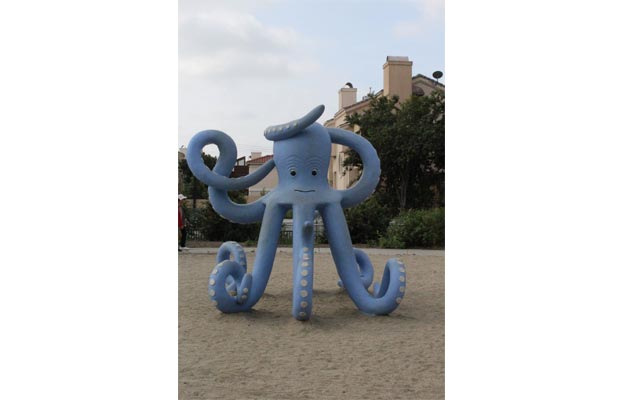Last updated: November 20, 2017
Place
La Laguna de San Gabriel

Photograph by Eloy Zarate, courtesy of California State Historic Preservation Office
La Laguna de San Gabriel, constructed in 1965, is a park located in San Gabriel, California, consisting of 14 concrete play sculptures created by master artist Benjamin Dominguez. La Laguna de San Gabriel Playground (La Laguna Park) is the final of many parks created by concrete master Benjamin Dominguez. La Laguna Park represents the culmination of Dominguez’ artistic work and the many signature elements that he developed over a period of decades, and these signature elements are combined and represented in the park’s large playsculptures. Benjamin Dominguez (1894-1974) was a Mexican immigrant and master concrete artist who brought with him to the United States age-old techniques of concrete working and sculpture garden design that originated in Europe and learned by Dominguez in Mexico City. Dominguez used this knowledge to create unique and highly imaginative children’s playgrounds. The distinctive folk vernacular that Dominguez expressed in his play- sculptures and the mastery of concrete art that he displayed, were afforded an opportunity to shape and distinguish child’s play during a time when city officials sought artistic activity rather than proscribed play. His sculptures provided exactly the sort of play that the “blue ribbon committee” of architects, professionals, specialists, and government officials endeavored to inspire in the Guide for Planning Recreational Parks. For the City of San Gabriel, La Laguna Playground is testament to the broad and continuing pattern of immigrant and minority communities and the contributions they make to the broader community. Dominguez’ contribution to the communities who have managed to retain his works is a testament to the often organic process and understanding of the population that is so important to the design and function of public spaces.
